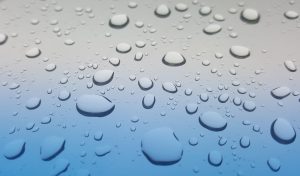It’s hard to believe but before wiper blades were a thing, drivers would stop their vehicle, wipe off any rain, dirt or snow and carry on with their journey.
Way back in 1903 when Mary Anderson, who is popularly considered to be the main inventor of wiper blades, came up with the idea while riding a trolley in New York.
Thanks to visionaries like Mary Anderson, wiper blades are considered one of the most vital aspects to a drivers safety. When driving, you need to have maximum vision and your windscreen has to be clear from dirt, rain and snow. It’s rule 229 of the Highway Code and it needs to be adhered to.
What Are Silicone Wiper Blades
If you’re interested in only the best kit for your vehicle then you’ve probably heard about silicone wiper blades.
 These wiper blades have a silicone rubber as opposed to traditional blades that have vulcanised rubber. Silicone coating claims to promote water beading which means using your wiper blades less when driving in light rain.
These wiper blades have a silicone rubber as opposed to traditional blades that have vulcanised rubber. Silicone coating claims to promote water beading which means using your wiper blades less when driving in light rain.
This system also allows water to roll up the windscreen when you drive at a faster speed, also meaning you use your wiper blades less.
What are the Advantages of Silicone Wiper Blades?
Manufacturers claim that silicone blades can last twice as long as standard wiper blades on the market. This is due to the thermal resilience silicone provides over traditional rubber material. The addition of the silicone increases the durability of the rubber in both high and low temperatures which in turn increases the life of the wiper.
 The other benefit is the water beading effect the silicone coating can provide.
The other benefit is the water beading effect the silicone coating can provide.
Perfect For Driving At Speed
The water beading effect really comes into it’s own when driving at higher speeds, typically over 50mph. At these speeds, the airflow has enough force to literally push the water beads up and off the windscreen. This is due to the silicone rubber leaving a thin film on the windscreen that naturally repels the water which in turn reduces the friction. This allows the water droplets to easily slide up the screen.
While you will still need to use your wipers, the beading effect can reduce the required frequency of wipes which further aids the longevity of the wiper blade.
Why aren’t all wipers silicone?
It stands to reason that if silicone rubber is more durable than vulcanised rubber, and offers the benefits of water beading, why aren’t all manufacturers using silicone? The answer here is two fold.
Silicone Wipers can Produce A Haze
The first issue is one of hazing. There are cases on forums where car owners have been left with smearing or a film of haze on their windshield. This is due to the thin film the silicone blade can leave. With certain condition of the windscreen combined with light conditions, it can result in a short haze remaining on the windscreen after each wipe. Wiper blades are supposed to improve visibility, so suddenly having a view akin to a pea soup fog can be very unnerving.
Silicone Rubber Costs More
The second reason is also one of cost. As with many things, the economics of a technology can prevent a seemingly better solution becoming a popular mainstay. At time of writing, typical prices for a single silicone wiper blade range between £15-£30 each. Whereas a standard rubber blade from the top brands range from £7-£11 each. This is a significant price difference which will put a lot of people off.
As technology advances, it’s very possible silicone wiper blades may reduce in price, eliminate the possible haze issue and become the norm rather than the exception.
A Lack Of Available Products For Your Windscreen
Due to the above issues, wiper blade manufacturers only offer a small range of silicone wiper blades, which makes finding the best choice difficult.
Conclusion
While these blades have a great selling point in theory, the added costs and the potential for haze makes this a tough sell right now.
Traditional rubber wipers are still very effective and come at a much more budget friendly price. But is there a way to get the best of both worlds?…
An Alternative To Silicone Wiper Blades
We have a simple solution that has all the benefits of silicone blades, without the downsides. Choose a quality blade such as Bosch wiper blades, and apply some Rocket Butter Hydro Seal to your windscreen. One or two coats of this every 6 months will create a protective seal on your windscreen that allows the water to bead and run off with ease. It’s more effective than a silicone wiper blade, won’t cause hazing and will actually extend the life of your wipers due to simply using them less! A true win-win solution.
If you’re unsure on how to choose the right wiper blades for your vehicle, we’ve curated a guide to wiper blades that should help you with your decision.
Frequently Asked Questions About Wiper Blades
What Is Water Beading On A Windscreen?
Normally when water falls on the glass, it spreads across it in a film like layer. With a base silicone coating, the water is not able to spread out and therefore sits on top in the form of a small bead. The profile of the small bead means it sits up into the airflow across the screen. Combined with a lower surface area touching the glass, it simply rolls off at higher speeds.
Is Water Beading Efficient When Driving?
Silicone wiper blade manufacturers claim that water beading is much more effective when driving at high speeds (or in high winds). This is true, the water will roll of the screen and reduce the frequency of wiper use. If your driving habits involve a lot of motorway driving, you will benefit the most.
When Should Wiper Blades Be Replaced?
The accepted length of time for wiper blades is typically between 12 – 18 months. However weather conditions and individual use will affect this massively. If you get any signs of streaking, skipping, squeaking or general poor performance, it’s time to think about replacing them. You can try cleaning them with vinegar first as this sometimes restores performance and extends the usable life a little.
What Wiper Blades Fit My Car?
Not sure which wiper blade fits your car? Our car reg finder can show you what wiper blades you need.
Related Articles
- Overview
- Windscreen Types
- Wiper Blades Guide
- Silicone Wiper Blades: Explained
- Silicone Wiper Blades: Explained
Author: ABD.co.uk


Great review about silicone blades! I think these wipers were just a phase and I don’t know many car owners who have them (or tell anyone they have them).
Whenever I clean my car, I just spray the windshield with some rain repellent. It saves me money because the bottle lasts forever and a day!
I’ve had Silblade wiper blades on my truck and car since 2015 and they still work like brand new. I’m getting another set for my truck because the frames are rusting through. The ones on the car are good. Don’t notice any hazing with the Silblades.
Cleaning your windshield regularly will increase your wiper blade life. Road dirt can cause blade to ride over top of a greasy windshield.
Silicone blades sound amazing according to some parts sellers, but the hazing I got in heavy rain was dangerous – it was enough to obscure my view and almost caused an accident, only luck prevented it! The windshield was newly cleaned and the blades were new, so can’t blame grease or dirt. They’re not fit for purpose and are dangerous!!